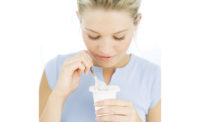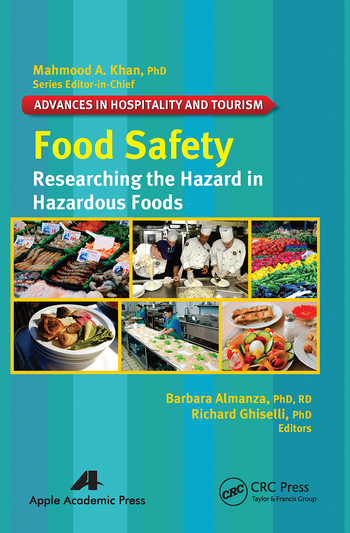A Trend in Vitamin D
Evidence indicates vitamin D supports bone, brain and heart health; helps mitigate diabetes and depression; and aids in weight management, inflammation control, immunity and cancer prevention…and more. Is it really the new panacea?
Until just a few years ago, vitamin D was known simply as the “bone vitamin.” Then, researchers discovered that nearly every tissue and cell type in the body has receptors for vitamin D (VDR). Can a single ingredient truly shift an entire paradigm of nutrition in the blink of an eye? With vitamin D, this could be the case.
Nutrition experts don’t believe in silver bullets. The drive is always toward holisticism when it comes to nutrients and health. Yet vitamin D, as omega-3 fatty acids before it, begs an approach considering that—at least in some cases—there really are supernutrients able to stand up to the scrutiny of science and reveal an impressive array of health benefits.
A flood of scientific evidence coming out in just the past decade suggests that higher intakes of vitamin D can be protective against an array of diseases and conditions beyond the bone health for which it’s famous. It can protect against certain types of cancers, including pancreatic, breast, colon and colorectal cancers. Moreover, other new research has linked vitamin D to improved immune support, as well as conferring anti-inflammatory properties, important with such brain health-related diseases as Alzheimer’s and dementia, as well as depression. Adequate intake of vitamin D could also help prevent chronic diseases such as diabetes, heart disease, rheumatoid arthritis and multiple sclerosis.
The support for vitamin D is such that, for years now, the experts have called upon consumers to increase their daily intake of this hormone-like compound. The number of Americans who take a vitamin or supplement continues to increase, according to the third annual “America’s Take on Vitamins” survey of 1,000 U.S. adults (sponsored by the retail supplement company, Vitamin Shoppe Inc.). The survey revealed that 64% of Americans currently take a vitamin or supplement, up slightly from 63% in 2012 and 60% in 2011.
The need for vitamin D supplementation might seem questionable since human bodies can make it from the UV rays in sunlight (for fair-skinned persons wearing clothes that permit a great area of exposure, just 15 minutes per day can provide more-than-adequate amounts of vitamin D).
Outside of cold-water fish, rich sources of vitamin D in foods are scarce. However, while some experts say it is difficult to obtain sufficient D from the diet, dietary access is easier than for a number of other critical nutrients. Dairy products, eggs, fish, certain yeasts, fortified juices and, as recently determined, mushrooms all can provide needed daily D. Still, vitamin D deficiency has become a global epidemic.
Daily D
An estimated 1 billion people do not have adequate vitamin D levels. And, recent surveys have shown some two thirds of Americans don’t have enough vitamin D to keep all of their tissues operating at peak capacity. This is yet another example, along with a number of minerals and functional nutrients, of a national diet that has become dangerously calorie-rich while nutrient-poor. The same decreased activity that has exacerbated the obesity epidemic has also contributed; less activity usually translates to less time outdoors and, thus, less exposure to sunlight. Even then, few people venture into the sunshine these days without slathering themselves in sun block.
Based on its review of data of vitamin D needs for the U.S. population, a committee of the Institute of Medicine concluded that people are at risk of vitamin D deficiency at serum [25(OH)-D] concentrations <12ng/mL. Some are potentially at risk for inadequacy at levels ranging from 12–20ng/mL. Practically all people will have sufficient vitamin D status at levels ≥20ng/mL; the committee stated that 20ng/mL is the serum [25(OH)-D] level that covers the needs of 97.5% of the population. Serum concentrations >50ng/mL are associated with potential adverse health effects.
Several issues can impact a person’s vitamin D status. People who have darker-colored skin, because of higher levels of the pigment melanin, have a reduced ability to produce vitamin D from their exposure to sunlight. Also, people who live in more northern latitudes or regularly use sunscreen markedly reduce their natural production of vitamin D. As people age, their skin cannot synthesize vitamin D as efficiently, and the kidneys also less able to convert vitamin D to its active hormonal form.
Vitamin D-fortified milk has been a staple in American households for decades. However, according to a recent article in the Wall Street Journal, “America’s Milk Business in a ‘Crisis,’” per-capita U.S. milk consumption, which peaked around World War II, has fallen almost 30% since 1975. This, even as sales of yogurt, cheese and other dairy products have risen, according to USDA statistics. This represents an average rate of decline of about 3% per year, as Americans are turning more to flavored waters and other beverages.
As a result of the important discovery that every cell in the body has VDRs, much higher doses of vitamin D are believed to be required for optimal functioning. Revised daily requirements jumped from 200-400 IUs per day (depending on the individual) to 600 IUs in 2011, with many experts calling for an increase to 1,000-1,200 IUs.
Two Ds
There actually are two main forms of this fat-soluble vitamin, referred to each as ergocalciferol (vitamin D2) and cholecalciferol (vitamin D3). Ergocalciferol is the form present in plants or yeast following exposure to ultraviolet light. It has a shorter circulating half-life, owing to its weaker affinity for the vitamin D-binding protein in the blood. It also is less potent than its cousin, cholecalciferol. However, new studies are indicating D2 might be more potent than previously believed.
Reporting in 2011 in the Journal of Agricultural and Food Chemistry, Dennis Gordon, Ph.D., et al, assessed the bioavailability and efficacy of vitamin D2 compared to vitamin D3 as pertains to bone trabecular bone mineral content, bone mineral density, bone volume, connectivity density and greater midshaft bone total. The study, conducted on rat models over a two-month period, used bread baked with vitamin D2-rich (UV-exposed) yeast. Results, according to the authors, showed “no significant difference due to [the] vitamin D source.” They concluded, in part, that “…vitamin D2-rich yeast baked into bread is bioavailable and improves bone quality in vitamin D-deficient animals.”
British and American pharmacopoeias continue to generalize the two nutritional forms of vitamin D, as their molecular weights are very similar. The Food and Nutrition Board of the Institute of Medicine, in its 2010 report entitled, “Dietary Reference Intakes for Calcium and Vitamin D,” gives a general conversion factor guideline where 1mg cholecalciferol is equivalent to the biological activity of 40 IU of vitamin D.
Vitamin D3 is still the most common form of vitamin D used in food fortification and over-the-counter dietary supplements, although vitamin D2 from yeast allows greater application in items such as baked goods. Moreover, vitamin D2 from mushrooms opens the door to increased fortification of items like savory RTE meals and snacks.
Vitamin D3 is produced in the skin upon exposure to ultraviolet (UV-B) irradiation, which catalyzes the conversion of 7-dehydrocholesterol (provitamin D3). Vitamin D3 and vitamin D2 are subsequently transported to the liver, where they are hydroxylated to 25-hydroxyvitamin D, also called calcidiol. This major circulating form of vitamin D is the indicator used to determine a person’s vitamin D status. A second hydroxylation reaction occurs in the kidney, which converts the vitamin to the active, hormonal form, also known as calcitriol.
Boosting D
Since vitamin D primarily targets bone health, including bone strength and density, and is essential for absorption of calcium and phosphorous in the body, fortification has enjoyed a long tradition in American food manufacturing. In fact, for nearly a century, the fortification of milk with vitamin D has been critical for the eradication of rickets, a deficiency disease that leads to stunted growth, bowed legs and delays in motor development in children. Milk was chosen as the fortification vehicle, because it was widely consumed, palatable to young children and rich in nutrients.
However, while rickets ceased to be a public health issue in the U.S. many years ago, there has been a creeping global resurgence recently. This is due to both vitamin D and calcium deficiency. And, because of the growing evidence of health benefits associated with vitamin D, there has been active research into developing other technologies and products which can also maintain adequate levels of vitamin D throughout a product’s shelflife.
In the U.S., while most fluid milk and other milk products, such as chocolate milk, are generally fortified with vitamin D3, other vegetarian, non-dairy milk substitutes—such as soy milk, rice milk or almond milk—also typically are fortified. This is usually achieved with plant-derived vitamin D2. Additionally, yogurts, some cheeses, juices and vegetable oil-based spreads also are fortified with vitamin D.
Still, these foods and beverages commonly are fortified only at levels of 10-25% of the Daily Value. Some products, such as GFA Brands Inc.’s Smart Balance brand spread, claim 50% of the Daily Value for vitamin D3, making it an excellent source. Certain juice products and cereals also have been formulated to contain higher amounts.
Vitamin D fortification of foods is regulated in accordance with the FDA’s Code of Federal Regulations, and only select foods are authorized to be fortified with vitamin D. Vitamin D can either be added alone to foods or be included as part of a vitamin-mineral premix. Vitamin D (vitamin D2 or D3) is affirmed GRAS at specified maximum levels of safe use for certain food categories—ready-to-eat breakfast cereals (350 IU/100g); grain products and pastas (90 IU/100g); milk (42 IU/100g); and milk products (89 IU/100g).
Milk is one of those foods that has a “standard of identity,” and the level of vitamin D allowed is described. It mentions that, if vitamin D is added, it must be at a level of 400 IU per quart. Many scientific studies have suggested that infants and adolescents need far more vitamin D than is currently recommended. There has been a lot of discussion at the FDA about increasing the Recommended Daily Intake (RDI) from its current level of 400 IU up to 1,000 IUs per day. The Institute of Medicine has recently proposed that the new Recommended Dietary Allowance of vitamin D3 for both children and adults should be set at 600 IU/day.
Fortification of cow’s milk with vitamin D might not be adequate for obtaining the daily intake requirements, because many people have either a milk allergy or are lactose-intolerant. Other beverages, such as orange juice, also have been fortified with vitamin D and calcium.
Since milk consumption has been steadily decreasing, there has been some talk about fortifying baked goods with a certain type of instant dried bakers’ yeast. In order to manufacture this food additive, labeled as vitamin D2 bakers’ yeast, a strain of Saccharomyces cerevisiae is subjected to controlled lighting conditions to convert some of its sterols into vitamin D2. This vegetarian source typically contains approximately 2,000,000 ± 15% IU/100g.
Vitamin D2 bakers’ yeast is designed to be used in all types of yeast-raised, baked and frozen products where a specific and/or enhanced level of vitamin D is desired. It can be used alone as an active dry yeast concentrate, or in combination with conventional bakers’ yeast.
Recently, the FDA announced the amount of vitamin D allowed in bread and baked goods will be increased from a maximum level of 90 IU to 400 IU vitamin D2 per 100g when using vitamin D2 bakers’ yeast. The FDA allows this additive to be used in yeast-leavened baked goods and baking mixes, and yeast-leavened baked snack foods. Studies show there is no change in the performance of the vitamin D2 bakers’ yeast and that it is also heat-stable in the baked goods.
Shedding Some Light

photo credit: John Steiner/Wisconsin Antique Advertising Club
Cheers to Vitamin D
Until a century ago, the vitamin D deficiency disease rickets was a serious health crisis among children in the U.S. (It remains so in many developing countries.) In addition to skeletal malformation, especially of the long bones and joints, rickets can include other developmental effects. In 1924, Harry Steenbock, a biochemistry professor at the University of Wisconsin, Madison, developed a technique for using artificial UV light to increase the vitamin D content of certain food ingredients and fortification of foods with the crucial, hormone-like vitamin took off.
The Wisconsin Historical Society has documented that, in September 1935, Milwaukee’s Joseph Schlitz Brewing Co. was so inspired by Steenbock’s breakthrough research that it put out a new product in the company’s new and advanced crown-top cans: vitamin D-fortified beer. Although the new product never quite took off, it prefigured the current drive to include the critical vitamin in more foods and beverages than ever before.
|
Mushrooms can be viewed in a whole new light—literally. Mushrooms are the only fruit or vegetable with natural vitamin D2 as ergosterol. Since ergosterol is a plant sterol that converts to vitamin D when exposed to the ultraviolet rays of the sun, mushrooms, it was discovered, can increase their content of D2 naturally, when exposed to UV light. The white button mushroom variety contains 1% of the daily value of vitamin D for adults. All mushrooms have vitamin D ranging from 4 to 400% of the Daily Value.
Monterey Mushrooms Inc., in collaboration with the USDA, developed a safe system that replicates this natural action that occurs when mushrooms are exposed to sunlight. Through their research efforts, they found that mushrooms respond to light in much the same way humans do—by converting the sun’s rays into vitamin D2. During processing, the mushrooms are exposed to high levels of ultraviolet light for a certain period of time. It’s of interest to note that some varieties of mushrooms have more vitamin D than whole milk.
Importantly, especially to processors using conditions of heat or pressure, the vitamin D produced has also been shown to be stable, maintaining its nutritional value even after being put through cooking (or freezing). A single, 3oz serving of Monterey’s treated mushrooms provide at least 100% of the RDI for vitamin D. By exposing fresh mushrooms to just five minutes of UV light after harvest, their vitamin D content can be increased to levels up to 80µg or 2,700 IU.
Vitamin D Stability
Vitamin D is a fairly stable nutrient in foods. It will not be damaged by most common cooking techniques and is only marginally sensitive to light. More of the vitamin can be expected to be lost from foods cooked in oil. Fried eggs lose about 20% of their vitamin D, compared to only 10% lost in the poaching process.
There is some discrepancy about how well vitamin D stands up to high-heat cooking techniques (>300°F). The amount of time under high heat can also play a role with foods such as cheeses. Vitamin D can be stable over time, provided it is protected by sound packaging. Cheeses that are ripened for over a year do not usually have a significant loss of their vitamin D content.
However, vitamin D is highly susceptible to oxidation. The good news is that for food and beverage fortification, dietary supplements, infant formula and even baked goods, D can be microencapsulated. Products also can be packaged under a nitrogen gas headspace to decrease the detrimental oxygen.
Although lipid-soluble, advances in microencapsulation technology also have made it possible for vitamin D to be made into a cold-water-dispersible powder. Typically made with various polymers, including those considered vegetarian-friendly, such microencapsulation offers numerous advantages beyond basic solubility. It can help reduce overages, protect against oxidation, avoid ingredient interactions, mask unwanted taste and odor, and increase shelflife. It also can reduce hygroscopicity and allow for slow, controlled release of the active ingredient.
The potency of vitamin D2 or D3 ranges from 100,000 to 400,000 IU/g for the microencapsulated powders, while the potency is 1,000,000 IU/g for an oil-based dispersion used for manufacturing soft gelatin capsule dietary supplements.
Vitamin D is vital for most human metabolic functions, so having an inadequate intake puts people at risk for the development of a range of chronic diseases and health problems. Fortunately, food and ingredient scientists, recognizing the emerging importance of vitamin D fortification and supplementation, continue to devote extensive energies to developing processes and formulations for incorporating this vital nutrient at adequate levels into the food supply NS
Looking for a reprint of this article?
From high-res PDFs to custom plaques, order your copy today!







